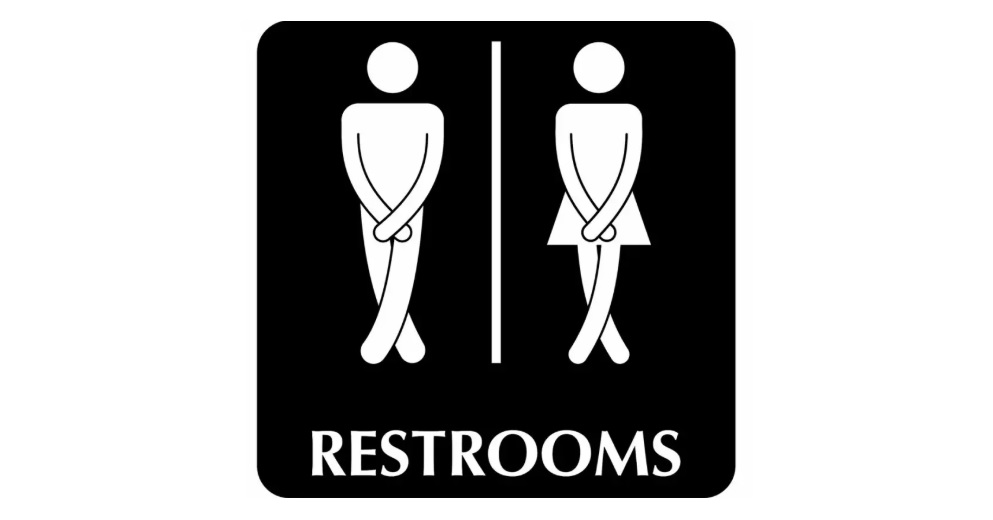Women’s Health: Start Here!
Women’s Health: Start Here!

A woman will face various potential health challenges during the different stages of her life, as significant hormonal changes take place with age.1 This comprehensive guide sheds light on many of these challenges – including common reproductive, vaginal and urinary conditions – in order to support South African healthcare professionals as they explain these conditions and their potential treatments to their patients.
1. Puberty and Adolescence
Common Health Challenges
- Hormonal Acne
Description: Acne is a prevalent skin condition during puberty, affecting about 80% of teenagers and also young adults up to 30 years.4 Hormonal acne is often triggered by changes in androgen, oestrogen and progesterone hormone levels, which results in the skin producing more sebum (oil). This oil can then clog the skin’s pores, causing acne.4 Treatment:
- Common acne treatments that can be applied directly to the skin include benzoyl peroxide, retinoids (a type of vitamin A), salicylic acid and antibiotics.5
- Oral treatments also include retinoids and antibiotics, as well as corticosteroids and the contraceptive pill.4,5
- In some cases, a dermatologist may prescribe medication to control the levels of androgen hormones.4,5
- A good skincare routine can also help to manage acne.5
Irregular Menstrual Cycle
- Oral contraceptive pills can help to regulate the menstrual cycle and can also help with painful periods.7
- Lifestyle habits like regular exercise and a balanced diet can promote more regular periods and help to relieve premenstrual syndrome (PMS) – see Emotional and Psychological Changes8
Iron-Deficiency Anaemia
- Shortness of breath.
- Heart palpitations.
- Pale skin.
Low iron levels can be caused by heavy periods or by not eating enough iron-rich foods.9 Pregnancy can also cause this condition.9 Treatment:
- Iron levels can be increased with an oral iron supplement.9
- Iron-rich foods like meat, leafy greens, pulses and iron-fortified cereals can also help to improve iron levels.9
Did You Know? Over 50% of South African women are iron deficient.10
Emotional and Psychological Changes
- Mood swings.
- Irritability.
- Bloating.
- Fatigue.
- Headaches.
Treatment:
- Lifestyle habits like a healthy diet and regular exercise can help to manage PMS.11
- Counselling and support from family and friends can make emotional changes easier to handle.11
- In more serious cases, when the patient’s quality of life is being affected, a doctor might prescribe oral contraceptive pills or antidepressants.11
Contraception and Sexual Health
- Barrier methods, e.g. condoms, spermicide creams or gels, a diaphragm or a cervical cap.12
- Hormonal methods, e.g. the oral contraceptive pill, an intrauterine device (IUD) or an implant.12
It is also important that teens and young adults have access to comprehensive sex education, to encourage healthy sexual behaviour and responsible contraceptive use, and to reduce the risk of sexually transmitted diseases (STDs).13,14
Exposure to comprehensive sex education in school is associated with less risky sexual behaviour and increased HIV testing in South African adolescent girls.14

2. Reproductive Years
Common Health Challenges
- Urinary Tract Infections (UTIs)
Description: A UTI is an infection of the bladder (cystitis), urethra (urethritis) or kidneys (pyelonephritis).19 UTIs are very common, with 50% to 60% of adult women experiencing one in their lifetime.19 Sexual activity, spermicide use and lack of oestrogen after menopause are all risk factors for developing a UTI.19 Symptoms include painful, frequent urination and cloudy urine.19 Treatment:
- A UTI is typically treated with antibiotics.19
- Low-dose preventative antibiotics or cranberry supplements can help to prevent or reduce the risk of developing a UTI.19
Vaginal Thrush
- Antibiotic use.
- Poorly controlled diabetes.
- High oestrogen levels.
Symptoms include itching and a thick, white vaginal discharge.22 Treatment:
- Thrush can be treated using topical cream or oral tablets.22 Some treatments are available over the counter at pharmacies, while others require a prescription from a doctor.22
Bacterial Vaginosis
- Bacterial vaginosis is treated with antibiotics.21,23
Overactive Bladder (OAB)
- Diabetes
- A UTI or other bladder disease.
- Pelvic organ prolapse.
Treatment:
- Medications are available to help treat an overactive bladder.24
- Pelvic floor physiotherapy and bladder training may also be helpful.24
- In more serious cases, surgery may be needed.24
Infertility
- Problems with ovulation.25
- Tubal disease.25
- Abnormalities in the cervix or uterus.25
- Tubal factor infertility (TFI) caused by infection accounts for over 85% of female infertility cases in parts of sub-Saharan Africa, compared to only 33% of cases worldwide.27
Treatment:
- Infertility treatments vary depending on the underlying cause and the patient’s age.25(p3) Options include:25
- Hormone therapy.
- Medications that stimulate ovulation (like clomiphene citrate).
- Assisted reproductive technologies (ART) such as in vitro fertilisation (IVF).
Lifestyle habits, like maintaining a healthy weight and managing stress, can also improve fertility.25
Did You Know? Untreated STDs, like gonorrhoea and chlamydia, can damage the reproductive organs and cause infertility.28 Untreated STDs are a major health problem among South African women in rural communities.29
HIV infection can also reduce fertility.30 Most of the 5 million HIV-positive South Africans are in the reproductive age group, and the current infertility rate in this group is 15% to 20%.30
South Africa has experienced a fertility decline since 1998, with the total fertility rate dropping from 2.9 in 1998 to 2.6 in 2016.31,31b
Endometriosis
- Painful, irregular periods.
- Pelvic pain.
- Painful intercourse.
- Infertility.
Women with endometriosis are also likely to have depression and anxiety.33 Treatment:
- Non-steroidal anti-inflammatory drugs (NSAIDs) or oral contraceptive pills can be used to manage pelvic pain and regulate periods.33
- Hormonal therapies, like progestogens and antiprogestins, or gonadotropin-releasing hormone (GnRH) analogues.33
- Severe cases may require surgery.33
Did You Know? Data on the prevalence of endometriosis among indigenous African women is lacking. Integrated endometriosis research programmes are much needed on this continent.34
Polycystic Ovary Syndrome (PCOS)
- Irregular, infrequent periods.
- Acne.
- Excess body hair growth.
- Scalp hair loss.
- High body mass index (BMI).
- High blood pressure.
These symptoms are a result of excess androgen (male sex hormone) production and lack of ovulation.35,35b PCOS is a leading cause of infertility and pregnancy complications.35 Treatment: Treatment will depend on the patient’s goals, and may involve improving fertility or managing the symptoms:
- Medications like metformin and clomifene can restore ovulation and help with conception.35
- Oral contraceptive pills can be used to manage acne and hair growth while regulating periods.35
- Healthy lifestyle habits like a balanced diet and regular exercise are also recommended, to control weight and optimise overall health.35
Contraception and Sexual Health

3. Pregnancy and Postpartum
Common Health Challenges
- Gestational Diabetes
Description: Gestational diabetes is the development of hyperglycaemia (high blood sugar levels) during pregnancy.38 This can cause health issues for the mother and baby.38 Treatment:
- Diet and exercise are crucial for managing gestational diabetes.38
- Patients must monitor their blood sugar. 38
- They may also need to take medication or insulin.38
Did You Know? South African women, especially those of reproductive age, are among the most overweight women globally.39 Gestational diabetes has increased rapidly in South Africa, with prevalence increasing from 1.6% in 1969 to 25.8% in 2018.39
Pre-eclampsia
- Headaches.
- Vision problems.
- Swelling of the hands, face or feet.
While many cases are mild, pre-eclampsia can cause serious complications if it is not monitored and managed.40 Early diagnosis ensures better outcomes for the mother and baby.40 Pre-eclampsia usually improves soon after delivery, but complications can still occur a few days afterwards.42 Treatment: Treatment involves close monitoring of the mother and baby, which includes:42
- Regular blood pressure checks.
- Blood and urine tests.
- Ultrasound scans.
- Medication to lower blood pressure.
Induced labour or a caesarean section may be needed to ensure safe delivery.42
Did You Know? Hypertensive disorders of pregnancy (HDP), such as pre-eclampsia, are the most common direct cause of maternal mortality and account for 18% of maternal deaths in South Africa.41
Postpartum Depression
- Low mood.
- Weight changes.
- Sleep disturbance.
- Low energy.
- Feelings of excessive guilt.
- Low confidence.
- Poor concentration.
- Psychomotor problems.
Treatment: Treatment options include:37
- Counselling.
- Cognitive behavioural therapy (CBT).
- Support groups.
- Antidepressant medication.
Early intervention and support are essential to managing the symptoms of postpartum depression effectively.37
Postpartum Recovery
- Vaginal bleeding and discharge.
- Swollen, painful breasts.
- Sore nipples.
- Constipation.
- Painful urination.
- Urinary incontinence.
Treatment:
- Adequate rest, good nutrition, hydration and gradual reintroduction of physical activity are all important for healthy postpartum recovery.43
- Any birth-related injuries or complications should be discussed with a healthcare professional.43
Contraception and Sexual Health

4. Menopause
Common Health Challenges
- Hot flushes and night sweats can be treated with hormone therapy or medication, like oestrogen, gabapentin and selective serotonin reuptake inhibitors (SSRIs).46
- Self-care habits such as avoiding caffeine and alcohol, wearing layered clothing, drinking cold water and doing gentle exercises like Pilates are also helpful.46
Urogenital Atrophy
- Vaginal creams, rings or tablets containing oestrogen can help with vaginal and urinary symptoms.46
Mood Swings and Emotional Changes
- Hormone therapy, antidepressants, CBT and counselling can all help with mood changes and depressive symptoms during menopause.46
- Hormone therapy can also improve sleep quality.46
- Lifestyle habits like good nutrition and regular exercise can also help.46
Contraception and Sexual Health

5. Postmenopausal Years
Common Health Challenges
- Hormone therapy is an effective treatment for the prevention of osteoporosis in women under the age of 60 years and women within 10 years of menopause starting.46
- Medications like bisphosphonates or selective oestrogen receptor modulators (SERMs) can help to maintain bone density.46,50
- Exercise, a healthy diet and calcium and vitamin D supplementation also promote bone health.46,50
Cardiovascular Disease
- Lifestyle habits such as a healthy diet and regular exercise help to maintain heart health and reduce the risk of cardiovascular disease.52
- Medications to manage high blood pressure, high blood lipids and diabetes also reduce the risk.52
Urinary Incontinence
- Pelvic floor physiotherapy, bladder training and anticholinergic medications can help to manage urinary incontinence.53
- In more serious cases, surgical intervention may be needed.53
Contraception and Sexual Health
Did You Know? Research shows that 73% of South African women are knowledgeable about menopause, higher than the average of 66% of women globally.55
6. Sexual Safety at Every Age
- Contraception: Various contraceptive methods are available to prevent unwanted pregnancy, and some provide protection from STDs as well.56 Discussing options with a healthcare provider can help women choose the best method for their needs.12
- STD protection: Women of all ages are susceptible to STDs and should use protective contraception when having intercourse with a new partner or multiple partners.47,54
- Regular screenings: Routine screenings for STDs are important for maintaining sexual health.57
- Vaccinations: The human papillomavirus (HPV) vaccine is recommended for women up to the age of 26, to protect against HPV.57
- Communication: It is essential to encourage open and honest communication with sexual partners about STD status and safe sex practices.

7. Conclusion
Medical References
- Musey VC, Collins DC, Musey PI, et al. Age-related changes in the female hormonal environment during reproductive life. Am J Obstet Gynecol. 1987;157(2):312-317. doi:10.1016/S0002-9378(87)80159-X
- Breehl L, Caban O. Physiology, puberty. In: StatPearls. StatPearls Publishing; 2024. Accessed August 1, 2024. http://www.ncbi.nlm.nih.gov/books/NBK534827/
- Rosner J, Samardzic T, Sarao MS. Physiology, female reproduction. In: StatPearls. StatPearls Publishing; 2024. Accessed August 1, 2024. http://www.ncbi.nlm.nih.gov/books/NBK537132/
- Ghosh S, Chaudhuri S, Jain VK, et al. Profiling and hormonal therapy for acne in women. Indian J Dermatol. 2014;59(2):107-115. doi:10.4103/0019-5154.127667
- Branch NSC and O. Acne. National Institute of Arthritis and Musculoskeletal and Skin Diseases. Published September 1, 2016. Accessed August 1, 2024. https://www.niams.nih.gov/health-topics/acne
- Lacroix AE, Gondal H, Shumway KR, et al. Physiology, menarche. In: StatPearls. StatPearls Publishing; 2024. Accessed August 1, 2024. http://www.ncbi.nlm.nih.gov/books/NBK470216/
- Cooper DB, Patel P. Oral contraceptive pills. In: StatPearls. StatPearls Publishing; 2024. Accessed August 1, 2024. http://www.ncbi.nlm.nih.gov/books/NBK430882/
- Namdev G, Naz S. Association of menstrual pattern with lifestyle factors among female medical students. Muller J Med Sci Res. 2021;12(2):75. doi:10.4103/mjmsr.mjmsr_33_21
- Iron deficiency anaemia. nhs.uk. Published October 23, 2017. Accessed August 1, 2024. https://www.nhs.uk/conditions/iron-deficiency-anaemia/
- Phatlhane DV, Zemlin AE, Matsha TE, et al. The iron status of a healthy South African adult population. Clinica Chimica Acta. 2016;460:240-245.doi:10.1016/j.cca.2016.06.019
- PMS (premenstrual syndrome). nhs.uk. Published April 23, 2018. Accessed August 1, 2024. https://www.nhs.uk/conditions/pre-menstrual-syndrome/
- Burke A. Contraception – Medical information. BMJ Best Practice US. Last reviewed July 1, 2024. Accessed August 1, 2024. https://bestpractice.bmj.com/topics/en-us/418
- The importance of access to comprehensive sex education. AAP. Accessed August 1, 2024. https://www.aap.org/en/patient-care/adolescent-sexual-health/equitable-access-to-sexual-and-reproductive-health-care-for-all-youth/the-importance-of-access-to-comprehensive-sex-education/
- George G, Beckett S, Reddy T, et al. Role of schooling and comprehensive sexuality education in reducing HIV and pregnancy among adolescents in South Africa. J Acquir Immune Defic Syndr. 2022;90(3):270-275. doi:10.1097/QAI.0000000000002951
- Mostert K, Sethole KM, Khumisi O, et al. Sexual knowledge and practice of adolescent learners in a rural South African school. Afr Health Sci. 2020;20(1):28-38.doi:10.4314/ahs.v20i1.6
- Thiyagarajan DK, Basit H, Jeanmonod R. Physiology, menstrual cycle. In: StatPearls. StatPearls Publishing; 2024. Accessed August 1, 2024. http://www.ncbi.nlm.nih.gov/books/NBK500020/
- Delgado BJ, Lopez-Ojeda W. Estrogen. In: StatPearls. StatPearls Publishing; 2024. Accessed August 1, 2024. http://www.ncbi.nlm.nih.gov/books/NBK538260/
- Cable JK, Grider MH. Physiology, progesterone. In: StatPearls. StatPearls Publishing; 2024. Accessed August 1, 2024. http://www.ncbi.nlm.nih.gov/books/NBK558960/
- Lewington A. Urinary tract infections in women – Symptoms, diagnosis and treatment. BMJ Best Practice US. Last reviewed July 1, 2024. Accessed August 1, 2024. https://bestpractice.bmj.com/topics/en-us/77
- Mwang’onde BJ, Mchami JI. The aetiology and prevalence of urinary tract infections in sub-Saharan Africa: A systematic review. J Health & Bio Sci. 2022;10(1):1-7. doi:10.12662/2317-3076jhbs.v10i1.4501.p1-7.2022
- Evaluation of vaginal discharge – Differential diagnosis of symptoms. BMJ Best Practice US. Last reviewed July 1, 2024. Accessed August 1, 2024. https://bestpractice.bmj.com/topics/en-us/510
- Patient Information Leaflet. Thrush. BMJ. November 28, 2018.
- Patient Information Leaflet. Bacterial vaginosis. BMJ. March 13, 2020.
- Overactive bladder. University Hospitals Sussex NHS Foundation Trust. Published December 20, 2022. Accessed August 1, 2024. https://www.uhsussex.nhs.uk/resources/overactive-bladder/
- Drakeley A, Chong D. Infertility in women – Symptoms, diagnosis and treatment. BMJ Best Practice US. Last updated December 12, 2023. Accessed August 1, 2024. https://bestpractice.bmj.com/topics/en-us/498
- 1 in 6 people globally affected by infertility. WHO. April 4, 2023. Accessed August 1, 2024. https://www.who.int/news/item/04-04-2023-1-in-6-people-globally-affected-by-infertility 26b. WHO. Infertility prevalence estimates 1990–2021. 2023. Accessed August 1, 2024. https://iris.who.int/bitstream/handle/10665/366700/9789240068315-eng.pdf?sequence=1
- Tsevat DG, Wiesenfeld HC, Parks C, et al. Sexually transmitted diseases and infertility. Am J Obstet Gynecol. 2017;216(1):1-9. doi:10.1016/j.ajog.2016.08.008
- Preventing sexually transmitted infections: Why South Africa isn’t winning. NICD. Published March 4, 2019. Accessed August 1, 2024. https://www.nicd.ac.za/preventing-sexually-transmitted-infections-why-south-africa-isnt-winning/
- Wilkinson D, Abdool Karim SS, Harrison A, et al. Unrecognized sexually transmitted infections in rural South African women: A hidden epidemic. Bull World Health Organ. 1999;77(1):22-28.
- Basu D, Basu JK, Ellison GTH. The burden of infertility among HIV-positive couples in South Africa: The available evidence. SAMJ. 2010;100(6):354-356. doi:10.7196/SAMJ.3111
- Fertility planning in South Africa. Stats SA. 2020. Accessed August 1, 2024. https://www.statssa.gov.za/?p=13044 31b. Unwanted fertility in South Africa: Report 03-00-02. Stats SA. 2020. Accessed August 1, 2024. https://www.statssa.gov.za/publications/Report-03-00-02/Report-03-00-022020.pdf
- Mental health is vital in treating infertility. SASOP. Accessed August 1, 2024. https://www.sasop.co.za/treating-infertility.
- Solnik MJ, Sanders A. Endometriosis – Symptoms, diagnosis and treatment. BMJ Best Practice. Last reviewed July 1, 2024. Accessed August 1, 2024. https://bestpractice.bmj.com/topics/en-gb/355
- Wanyoike GJ, Parkar R, Wanjiru NS. Systematic review of prevalence of endometriosis among indigenous Africans. OJOG. 2017;7(8):835-845. doi:10.4236/ojog.2017.78084
- Goodarzi MO. Polycystic ovary syndrome – Symptoms, diagnosis and treatment. BMJ Best Practice US. Last reviewed July 1, 2024. Accessed August 1, 2024. https://bestpractice.bmj.com/topics/en-us/141 35b. Handelsman DJ. Androgen physiology, pharmacology, use and misuse. In: Feingold KR, Anawalt B, Blackman MR, et al., eds. Endotext. MDText.com, Inc.; 2000. Accessed August 1, 2024. http://www.ncbi.nlm.nih.gov/books/NBK279000/
- Kepley JM, Bates K, Mohiuddin SS. Physiology, maternal changes. In: StatPearls. StatPearls Publishing; 2024. Accessed August 1, 2024. http://www.ncbi.nlm.nih.gov/books/NBK539766/
- Di Florio A, Jones I. Postnatal depression. BMJ Best Practice US. Last reviewed July 1, 2024. Accessed August 1, 2024. https://bestpractice.bmj.com/topics/en-gb/512
- Scott E, Spencer R. Gestational diabetes mellitus – Symptoms, diagnosis and treatment. BMJ Best Practice US. Last reviewed July 1, 2024. Accessed August 1, 2024. https://bestpractice.bmj.com/topics/en-us/665
- Dias S, Adam S, Rheeder P, et al. Prevalence of and risk factors for gestational diabetes mellitus in South Africa. SAMJ. 2019;109(7):463-467. doi:10.7196/samj.2019.v109i7.14127
- Pre-eclampsia. nhs.uk. Published January 11, 2018. Accessed August 1, 2024. https://www.nhs.uk/conditions/pre-eclampsia/
- Moodley J, Soma-Pillay P, Buchmann E, et al. Hypertensive disorders in pregnancy: 2019 National Guideline. SAMJ. 2019;109(9). doi:10.7196/12723
- Pre-eclampsia – Treatment. nhs.uk. Published October 23, 2017. Accessed August 1, 2024. https://www.nhs.uk/conditions/pre-eclampsia/treatment/
- Lopez-Gonzalez DM, Kopparapu AK. Postpartum care of the new mother. In: StatPearls. StatPearls Publishing; 2024. Accessed August 1, 2024. http://www.ncbi.nlm.nih.gov/books/NBK565875/ 43b. Chauhan G, Tadi P. Physiology, postpartum changes. In: StatPearls. StatPearls Publishing; 2024. Accessed August 1, 2024. http://www.ncbi.nlm.nih.gov/books/NBK555904/
- Postpartum birth control. ACOG. Last updated April 2023. Accessed August 1, 2024. https://www.acog.org/womens-health/faqs/postpartum-birth-control
- Sex and contraception after birth. nhs.uk. Published December 7, 2020. Accessed August 1, 2024. https://www.nhs.uk/conditions/baby/support-and-services/sex-and- contraception-after-birth/
- Currie H, Hamoda H, Fenton BW. Menopause. BMJ Best Practice US. Last reviewed July 1, 2024. Accessed August 1, 2024. https://bestpractice.bmj.com/topics/en-us/194
- Menopause. WHO. 2022. Accessed August 1, 2024. https://www.who.int/news-room/fact-sheets/detail/menopause
- Motlani V, Motlani G, Pamnani S, et al. Endocrine changes in postmenopausal women: A comprehensive view. Cureus. 15(12):e51287. doi:10.7759/cureus.51287
- Osteoporosis – Causes. nhs.uk. Published October 23, 2017. Accessed August 1, 2024. https://www.nhs.uk/conditions/osteoporosis/causes/
- Osteoporosis – Treatment. nhs.uk. Published April 4, 2018. Accessed August 1, 2024. https://www.nhs.uk/conditions/osteoporosis/treatment/
- The connection between menopause and cardiovascular disease risks. heart.org. Published February 20, 2023. Accessed August 1, 2024. https://www.heart.org/en/news/2023/02/20/the-connection-between-menopause-and-cardiovascular-disease-risks
- Cardiovascular diseases (CVDs). WHO. Published June 11, 2021. Accessed August 1, 2024. https://www.who.int/news-room/fact-sheets/detail/cardiovascular-diseases-(cvds)
- Kołodyńska G, Zalewski M, Rożek-Piechura K. Urinary incontinence in postmenopausal women – Causes, symptoms, treatment. Prz Menopauzalny. 2019;18(1):46-50. doi:10.5114/pm.2019.84157
- Menopause and sexuality. Office on Women’s Health. Last updated January 6, 2023. Accessed August 1, 2024. https://www.womenshealth.gov/menopause/menopause-and-sexuality
- Almost a quarter of the world’s women are not comfortable talking about menopause. Ipsos. Published November 10, 2022. Accessed August 1, 2024. https://www.ipsos.com/en-za/almost-quarter-worlds-women-are-not-comfortable-talking-about-menopause
- Bansode OM, Sarao MS, Cooper DB. Contraception. In: StatPearls. StatPearls Publishing; 2024. Accessed August 1, 2024. http://www.ncbi.nlm.nih.gov/books/NBK536949/
- Garcia MR, Leslie SW, Wray AA. Sexually transmitted infections. In: StatPearls. StatPearls Publishing; 2024. Accessed August 1, 2024. http://www.ncbi.nlm.nih.gov/books/NBK560808/






